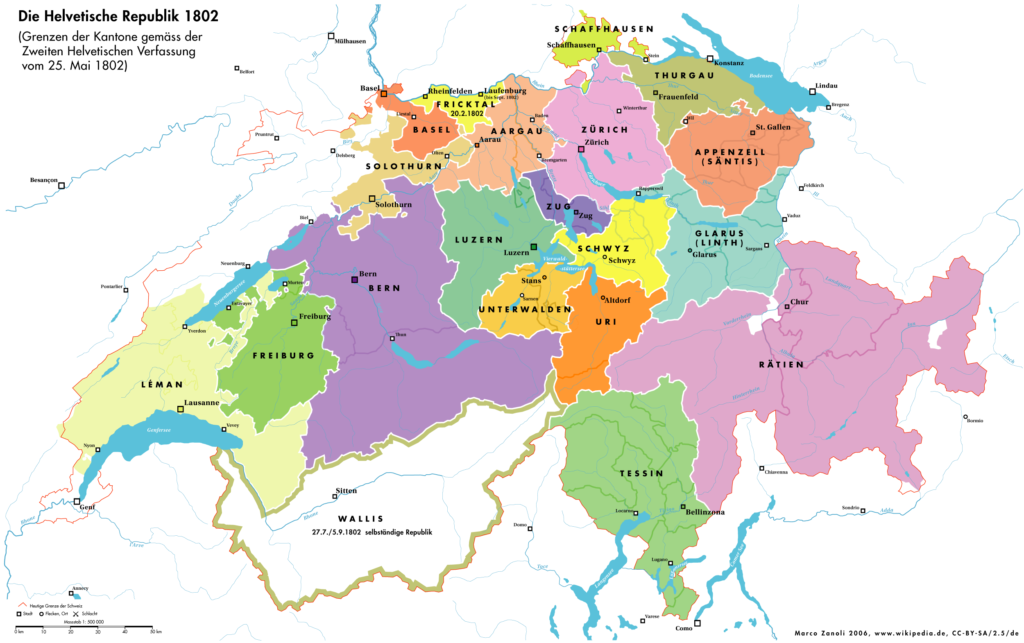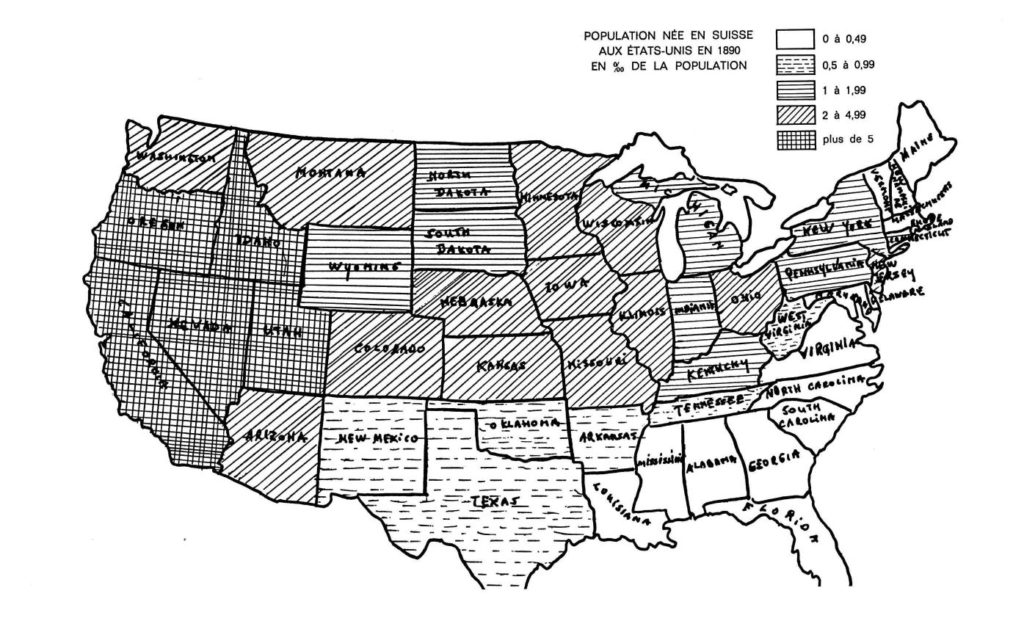
Swiss emigration in the 19th century
Information extracted from the website : Les chroniques du temps
It is estimated that more than 500 000 Swiss people who chose to emigrate between 1815 and 1914. The country then had 2 million inhabitants at the start of the century and more than 3 million inhabitants around 1900.
The main reasons for this population movement are the impoverishment of farmers, the large demographic growth and the agricultural and industrial crisis which punctuate the century. The emigrants then seek to find a land to farm, especially in America. This emigration gradually replaces the military emigration which had prevailed over since the 16th century.
It is a complete emigration of settlers, encouraged by the American authorities who seek to populate and to farm their agricultural lands.
Swiss emigrants mostly leave with their families, unlike emigrants from southern Europe who leave alone.
In addition to the voluntary emigrants who look for a better life, the American authorities denounce the existence of an emigration “of clearing”: towns would pay the destitute and the prisoners of common law so that they could leave the country.
Emigration quickly became a lucrative activity and from the 1850s, emigration agencies developed. They offered packages for transport to the harbour of emigration, accommodation and crossing. They are also accused of taking advantage of emigrants poverty and ignorance.
Crossing the Atlantic was an ordeal until the 1880s. Besides the length of the crossing (on average 44 days by sailing boat from Northern Europe to New York in 1867), emigrants could be exposed to epidemics such as scurvy, chickenpox, smallpox and cholera, indeed shipwrecks.
From the 1880s, the steamboat considerably reduces the journey (10 days from the north of Europe) and therefore the risks.
North America receives the majority of Swiss emigrants, who leave from the ports of Hamburg or from Le Havre. They land in New York and are registered at the Castle Garden Immigration Station and from the 1890s, at the Ellis Island Immigration welcome center.
Then, they went mainly to the West, to the large grassland states which offer free land to the settlers who agree to stay there for 3 years, in order to develop agriculture.
From the 1880s, Swiss emigrants found it more difficult to acquire lands and went more to the big cities of the East (notably New York, Pennsylvania and Ohio).
The Swiss found between 3000 and 5000 colonies according to figures, including Nouvelle Vevay (now New Vevay) and Tell City in Indiana, New Switzerland in Illinois, and New Glarus in Wisconsin. Across the United States, there are 36 Geneva and 52 Berne, under various spellings (Geneva and New Bern, for example).
The Swiss cantons among which the vast majority of emigrants leave for the United States are the cantons of Schwyz and Uri (more than 90% of emigrants), while those who leave the least are the cantons of French-speaking Switzerland from Geneva, Vaud, Valais and Friborg (less than 60%)

